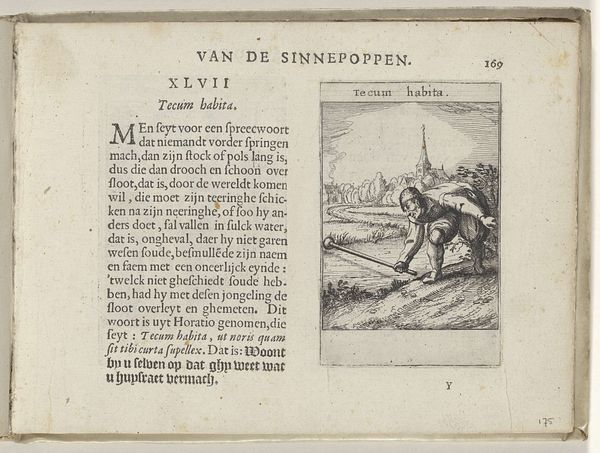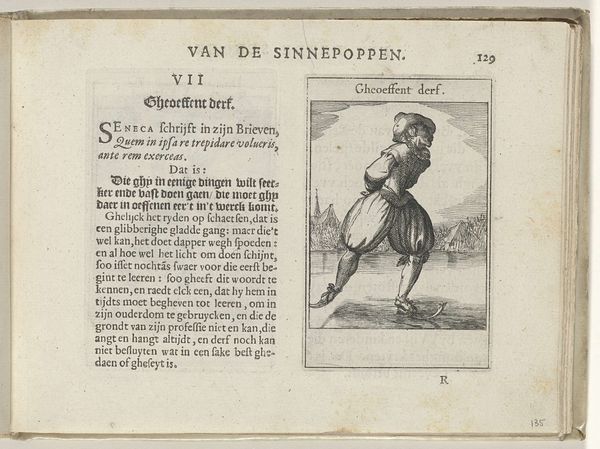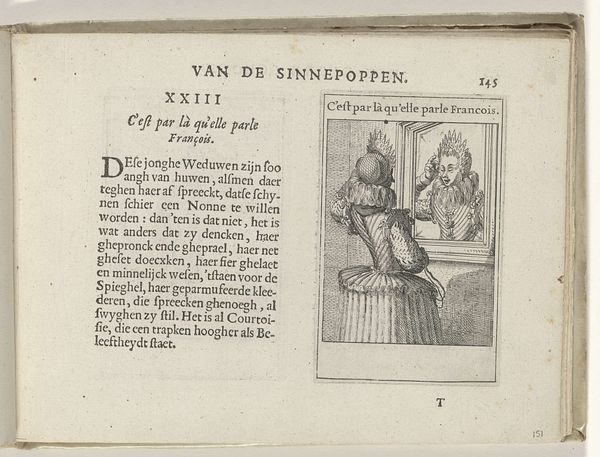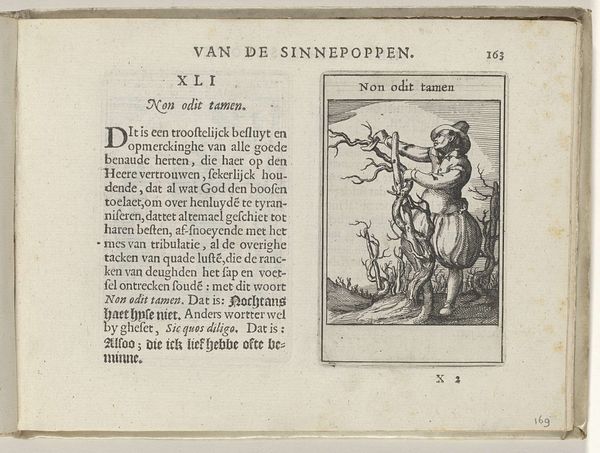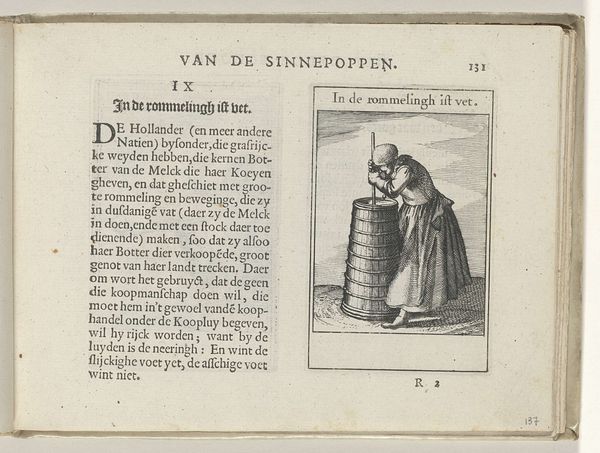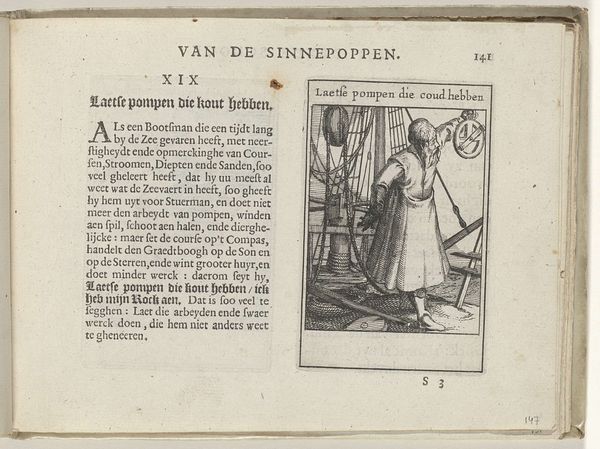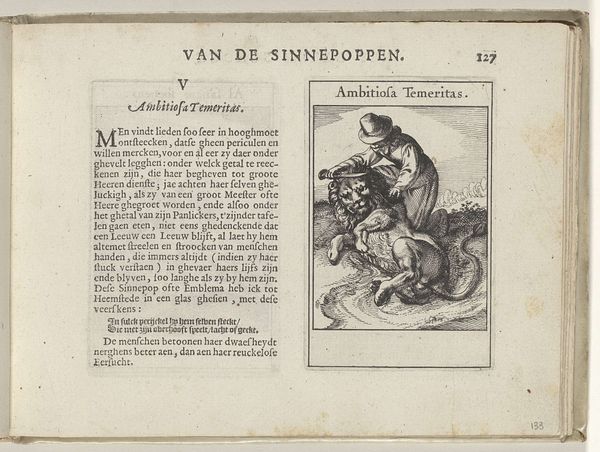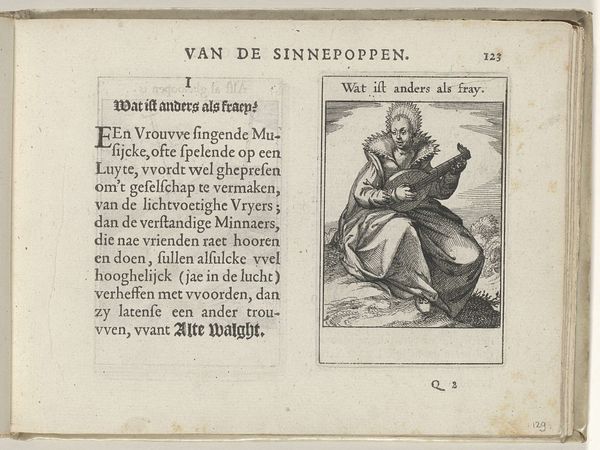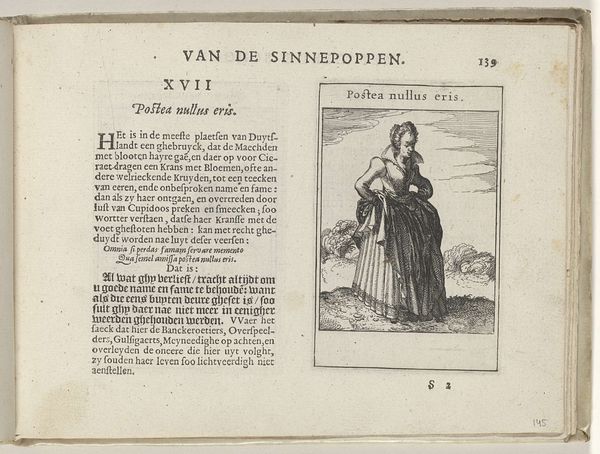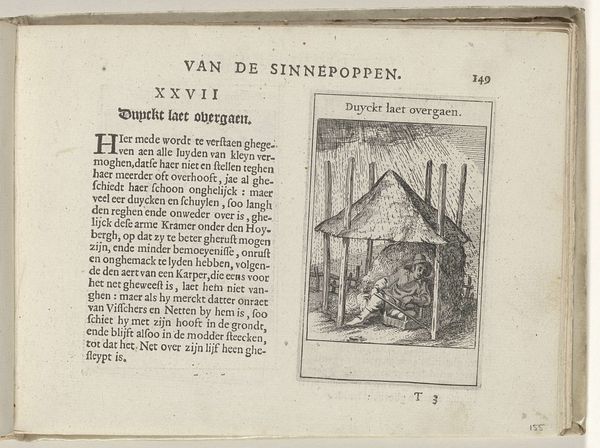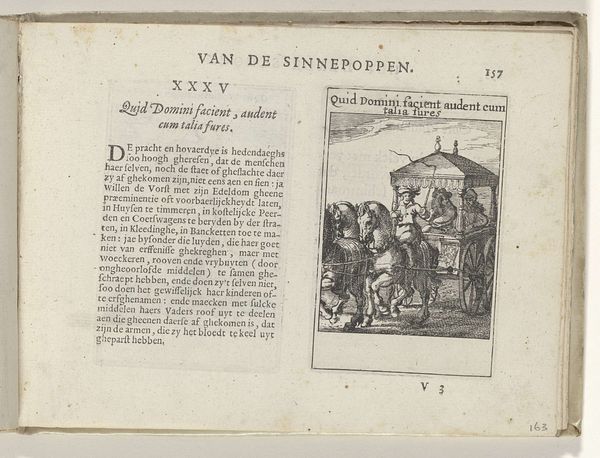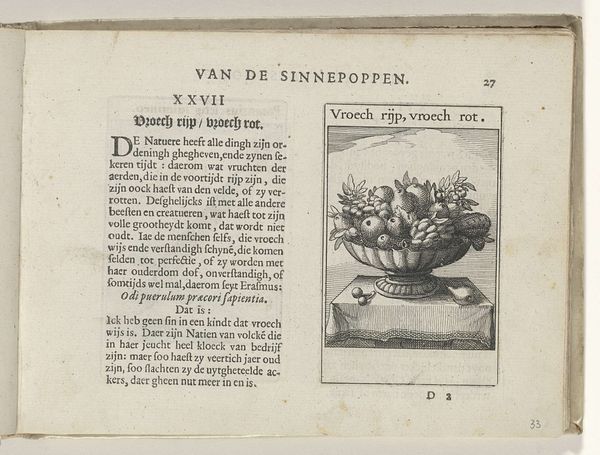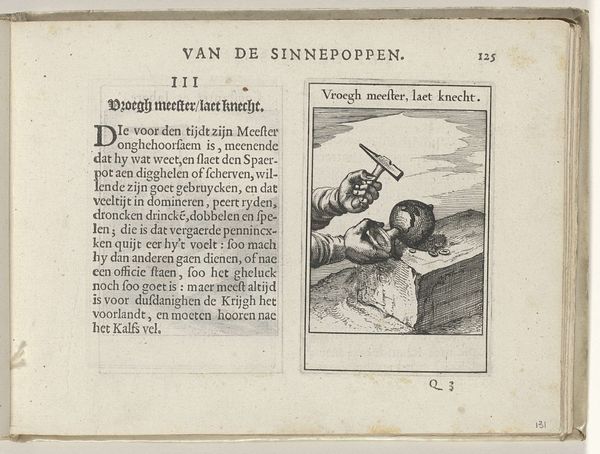
drawing, print, paper, engraving
#
drawing
#
medieval
# print
#
figuration
#
paper
#
genre-painting
#
northern-renaissance
#
engraving
Dimensions: height 137 mm, width 188 mm, height 95 mm, width 60 mm
Copyright: Rijks Museum: Open Domain
Editor: So, this engraving is "XIII Hoe past u dat harnas" by Roemer Visscher, created in 1614. It feels a bit chaotic, a blend of genre painting with a northern Renaissance style, don’t you think? The title roughly translates to "How does that armor fit you?"... What catches your eye, and how do you interpret this work? Curator: The immediate contrast between the text and image sparks questions about visual rhetoric and cultural memory. The question "Hoe past u dat harnas?" juxtaposed with the image of a disheveled figure hints at an incongruity—armor symbolizes protection and status, but its relevance is questioned by the surrounding scene. Notice how the discarded armor stands by, a silent judge almost, next to the instruments of domestic labor. The loaded symbols seem almost Medieval in their density. Editor: That’s a keen observation about the juxtaposition! So, the armor becomes less about protection and more about… aspiration, perhaps? Or maybe the futility of holding onto old status symbols in changing times? Curator: Precisely. Consider the flail in the figure's hand; while appearing violent, its primary role was agricultural. This symbol grounds the figure in peasant life while contrasting it with the absent, idealized, armored figure in the doorway. It subtly hints at post-war anxieties about shifting identities and economic struggles within a specific time. Could it mirror social commentary in a similar vein to some works by Pieter Bruegel? Editor: That's really fascinating! It’s like the image becomes a mirror reflecting social anxieties through these potent symbols. It is much more complex than what initially meets the eye! Curator: Indeed! And by looking closely at these cultural symbols, we unearth their lasting weight. The dialogue helps the viewer consider the multi-layered history contained in a seemingly simple scene, while understanding universal stories relevant in today's times.
Comments
No comments
Be the first to comment and join the conversation on the ultimate creative platform.
